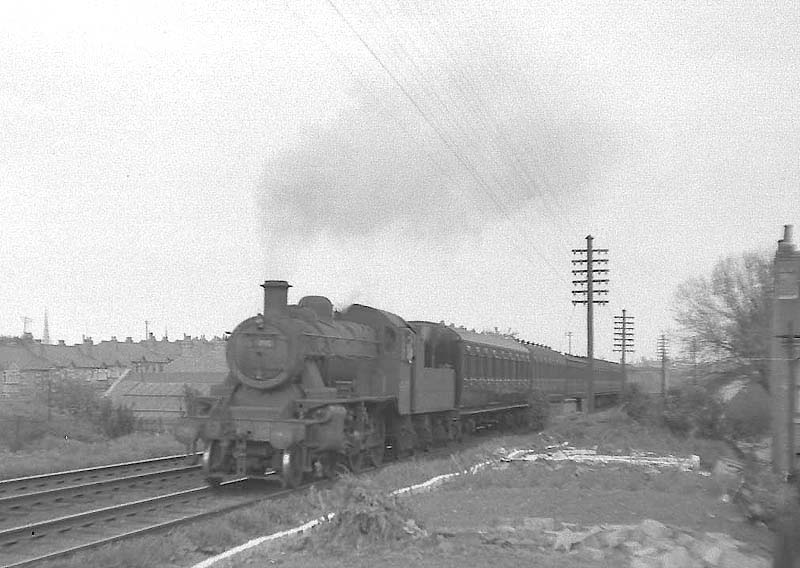 |
|
London North Western
Railway:

Midland
Railway:

Stratford
Midland Junction Railway
|

|
LMS Route: Rugby to Wolverhampton
LMS Route: Nuneaton to
Leamington
Coventry Station - BR Locomotives: lnwrcov259
 |
An unidentified ex-LMS 2-6-0 2MT Ivatt Mogul is seen on a
Nuneaton to Leamington local passenger service as it crosses Albany Road bridge
in Earlsdon. Elderly 0-6-0s formed the backbone of the low-powered locomotives
within the LMS fleet. William Stanier had concentrated on introducing larger
engines and it was left to George Ivatt after he succeeded Stanier after the
war to introduce a new class of low-powered locomotive. He designed a tender
version of the Ivatt Class 2 2-6-2T, introduced at the same time, which was
inspired by the Great Western 4500 and 4575 classes. The 2-6-0s, with their
greater range (3,000 gal of water and 4 tons of coal compared to the tank
design's 1,350 gal and 3 tons), were well-suited to their task and, following
attention to draughting problems by both Derby and Swindon, quickly became a
success. Further engines of this type were built as the BR standard class 2
2-6-0, these locomotives having BR standard fittings and a modified cab and
tender profile to allow completely unrestricted route availability; both LMS
and BR 2MT moguls are often referred to by the affectionate nickname "Mickey
Mouse". A total of 128 were built between 1946 and 1953, mostly at Crewe. 20
were built by LMS and given the numbers 6400-19. On nationalisation in 1948
40000 was added to their numbers to become 46400-19. The remaining 108
locomotives of the class, numbered 46420-46527 were built by British Railways,
and from 46465 (Darlington, 1951) an increase in cylinder diameter of 1/2 inch
yielded a Tractive Effort of 18,510 lb, 1,100 lb greater than the original
design. The LMS classified them 2F, BR as 2MT.
 back back

|
